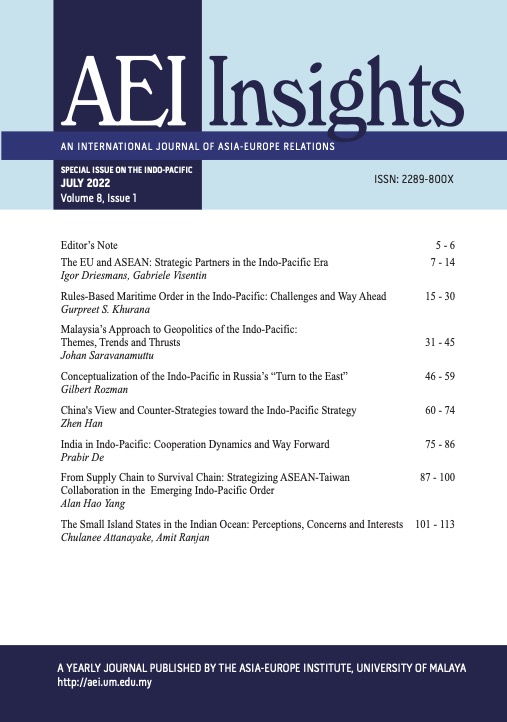China's View and Counter-Strategies toward the Indo-Pacific Strategy
Keywords:
Belt and Road Initiative, China, Indo-Pacific, NATO, USAAbstract
How does China view the Indo-Pacific construct, and how would China respond to the challenges imposed by the Indo-Pacific construct? This paper uses information from Chinese government documents and recent academic studies on the Indo-Pacific construct to answer this question. It finds that Chinese scholars define Indo-Pacific as an "alliance network" aiming to contain China's increasing influence in the region. The alliance network consists of multiple minilateral quasi-security alliances centered on the US leadership to contain China; however, it is also less robust than a formal alliance such as NATO. The weak links in the alliance network, such as the US-ASEAN relations, allow China to wedge against the Indo- China strategy. Because of such structure opportunities for wedging, China will use soft balancing strategies to wedge and weaken the Indo-Pacific construct. Hard balancing remains a possible option for China when China perceives the security threats from the Indo-Pacific escalate to a dangerous level. For a successful soft balancing, China needs to continue providing public goods, such as investment, trade, and regional stability to the region, particularly to nations that are less interested in helping the US contain China. Thus, its state- led economic programs, such as the Belt and Road Initiative, play critical roles in China's wedging against the Indo-Pacific construct.



